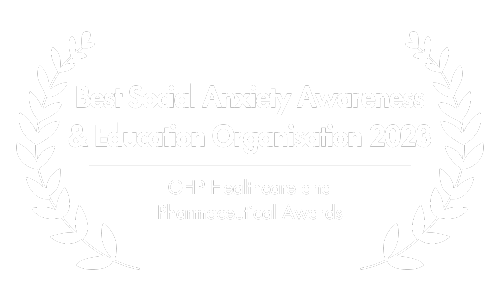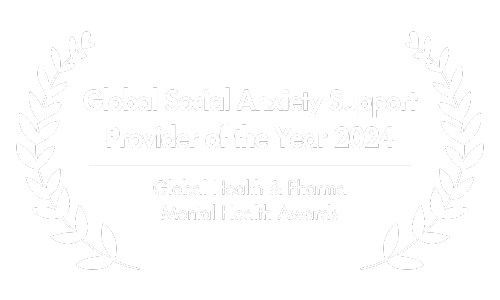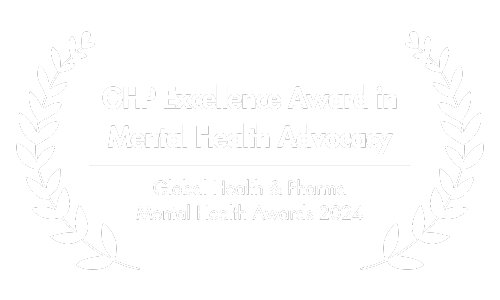Practical Tips and Exercises for Social Anxiety
This article contains a recommendation for a meditation app that we recommend for people with social anxiety. If you use this link, you may receive a significant discount, and we will receive a commission.
Social anxiety (formerly and often still referred to as social phobia) can be a debilitating condition.
Affected individuals tend to feel nervous, fearful, self-conscious and embarrassed in social situations, which often interferes significantly with their lives.
Fear of being judged or negatively evaluated by others can lead to avoidance of social situations, making it difficult to form relationships, connect with others, and succeed in personal and professional life.
However, despite these challenges, there is hope.
With the right tools and the proper support, people with social anxiety can overcome their fears and gain confidence in social situations.

In this article, we will explore tips and exercises designed to provide socially anxious people with practical tools to cope with their situation, reduce their social anxiety, improve their social skills, and enhance their relationships and social connections.
Each tip and exercise is accompanied by an information or worksheet, which can be downloaded in PDF format and will help you implement these recommendations in your daily life. You can easily access these files with a simple click.
Let’s get started.
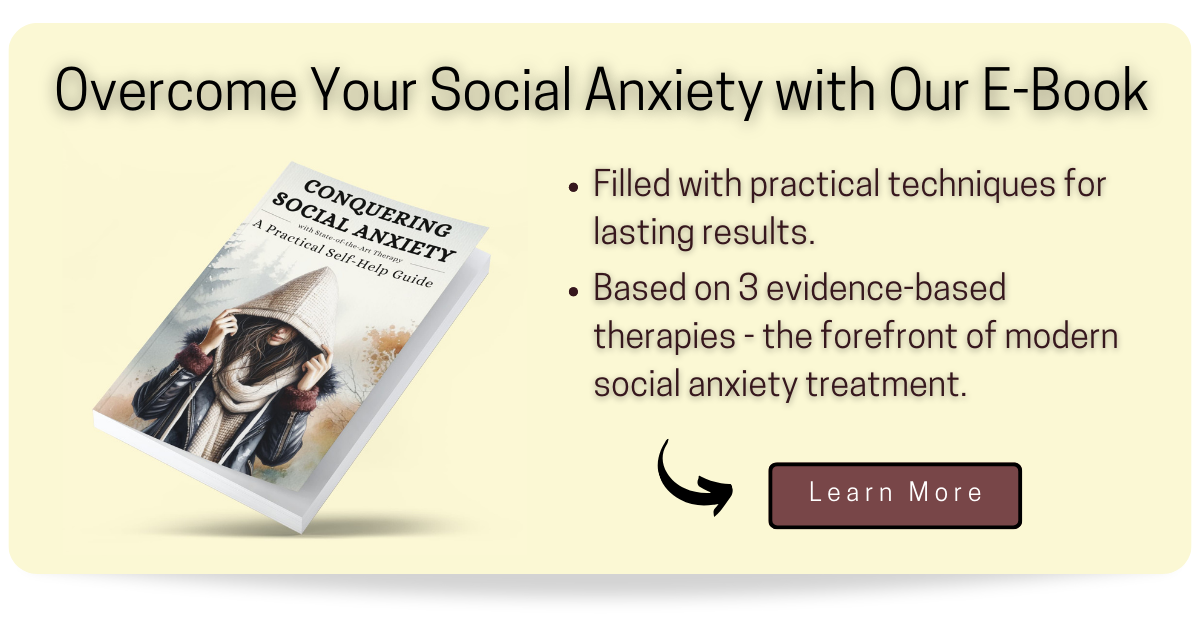
We have compiled 5 categories of tips and exercises to help you with your social anxiety.
Not all categories will apply equally to everyone, so focus on the ones that seem most relevant to you. You can always come back to the others later.
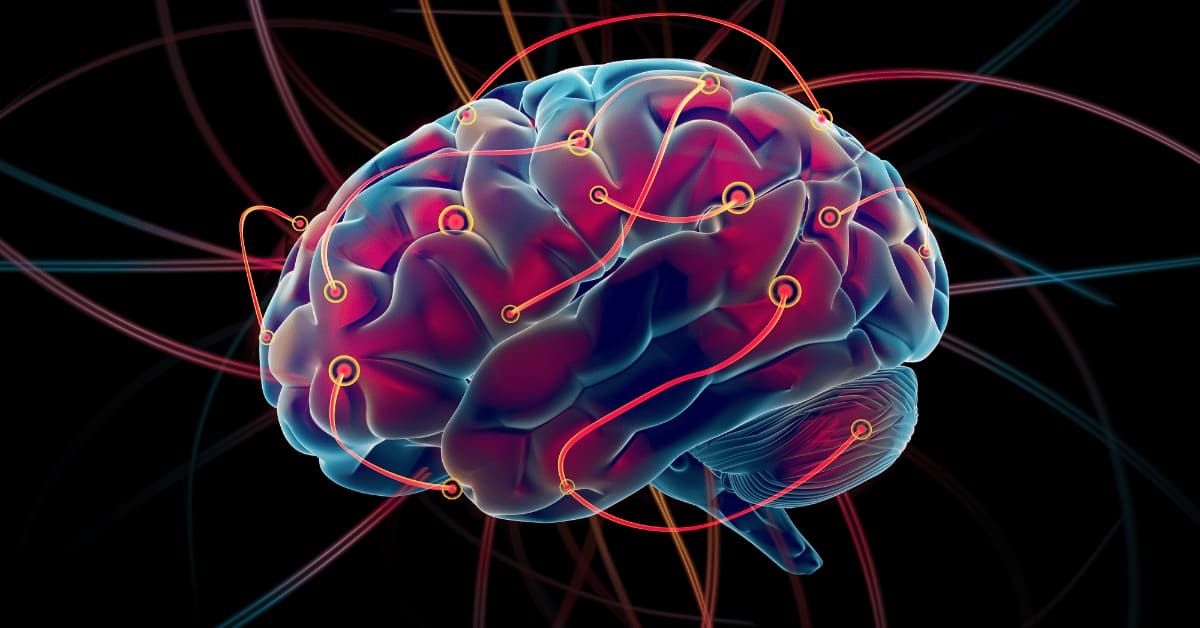
But before we move on to the main part of this article, let’s review some essential basics.
Even if you are familiar with them, we suggest you read through them to fully appreciate their importance when dealing with insecurity in social situations.
Part I: Laying the Groundwork
Good and sufficient sleep, healthy eating and regular physical activity are highly beneficial to your health. You already know that.
In fact, you are probably even aware of their positive effects on your mental health.
However, it is worth taking a moment to consider the impact that each of them can have on your social anxiety.
So, let’s take a quick look at them.
Good, Sufficient Sleep
Good sleep is essential for mental and physical well-being, and is especially important for people with social anxiety.
Poor sleep quality and lack of sleep can increase stress and anxiety levels, making it more difficult to manage social anxiety symptoms.

Studies have shown that sleep deprivation can affect cognitive processes, such as attention, memory and decision-making (Alhola & Polo-Kantola, 2007), resulting in a decreased ability to cope with anxiety-provoking situations.
To improve sleep quality, it can be helpful to establish a consistent sleep routine. This means going to bed and waking up at the same time every day, even on weekends.
It is also recommended to avoid caffeine and screens before bedtime, as they can disrupt sleep patterns. Creating a relaxing sleep environment by reducing noise and light can also be beneficial.
Sleeping between 7 and 9 hours a night is generally recommended, but sleep needs may vary significantly from person to person. Certain people may need more and others may need less sleep to feel rested and refreshed.
Also, some people may benefit from a nap during the day, while others may find that it disrupts their nighttime sleep.
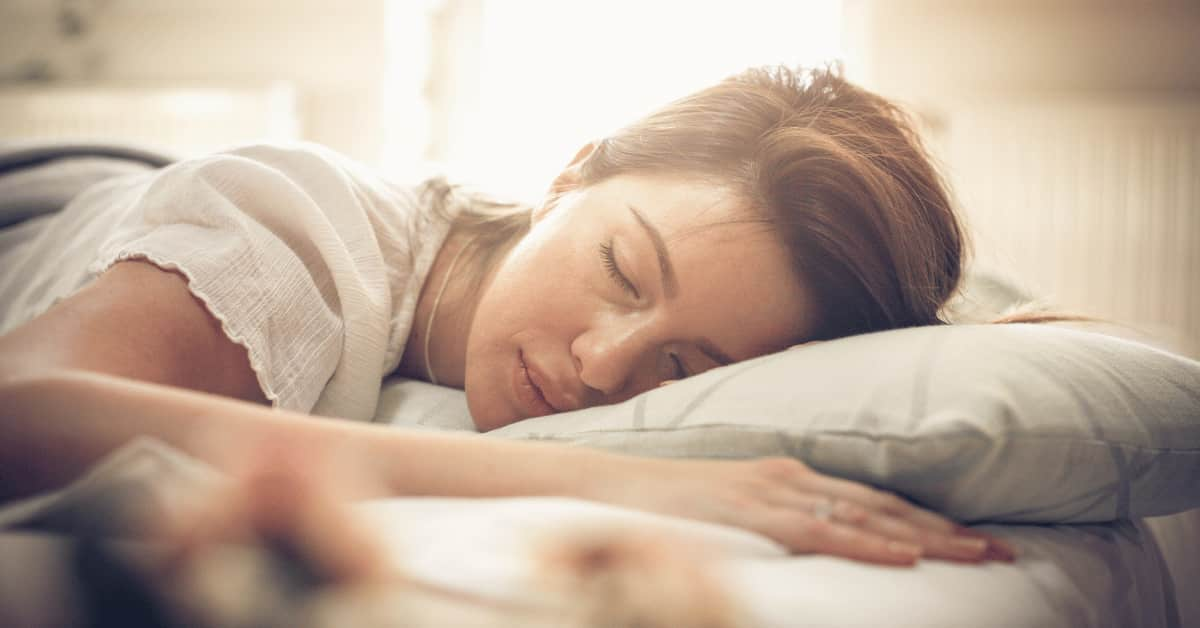
Interestingly, good sleep can have an anxiolytic effect, meaning it can help reduce anxiety levels (Kalmbach et al., 2018).
Getting enough sleep can improve mood, increase the ability to regulate emotions and improve cognitive function.
Therefore, improving sleep quality is a practical way to manage social anxiety.
For an information sheet (PDF) about the importance of sleep and some practical tips for sleeping if you suffer from social anxiety, simply click here.
Brief: Good, sufficient sleep is crucial for mental and physical well-being, and can help reduce stress and anxiety levels in individuals with social anxiety, making it easier to manage symptoms and improve overall quality of life.
Healthy Diet
Maintaining a healthy diet is essential for overall wellness and can be especially beneficial for people with social anxiety.
Consuming a diet high in processed foods, sugar and caffeine can exacerbate anxiety symptoms and disrupt sleep, leading to increased feelings of stress and anxiety (Aucoin et al., 2021).

The same scientific review concluded that a healthy Mediterranean-style diet, which includes whole foods such as fruits, vegetables, whole grains, lean protein and healthy fats, is associated with decreased anxiety.
This means that a healthy diet may help reduce anxiety levels and improve mood and energy levels.
In addition to a Mediterranean-style diet, consuming probiotic foods can be beneficial for gut health. Examples of probiotic foods include yogurt, kefir, sauerkraut, kimchi, miso, tempeh, and kombucha.
Emerging research suggests that gut health is linked to mental health (Simpson et al., 2020), and consuming probiotic foods may support a healthy gut microbiome, which seems to help reduce symptoms of anxiety and depression.

Staying hydrated by drinking plenty of water is also important for overall well-being. Dehydration can cause fatigue, headaches and irritability, which can exacerbate anxiety symptoms.
It’s important to remember that dietary needs can vary from person to person, and it’s essential to talk to a doctor or registered dietitian before making any major changes to your diet.
For an information sheet (PDF) on the importance of healthy eating and some practical tips for eating if you suffer from social anxiety, simply click here.
Brief: Eating a diet rich in whole foods, such as fruits, vegetables, whole grains, lean proteins, and probiotic foods, while limiting processed foods and sugar, can help improve mood and reduce anxiety & depression symptoms.

Regular Physical Activity
Regular physical activity has many benefits for people with social anxiety.
Engaging in physical activity can reduce stress and anxiety levels, and it can help improve mood and self-esteem (Galletly et al., 2007; Kandola & Stubbs, 2020).
Exercise releases endorphins, which are natural mood enhancers, and reduces levels of cortisol, a stress hormone that can exacerbate anxiety symptoms.

In addition, physical activity can help regulate circadian rhythm, which can promote better sleep, an important factor in reducing social anxiety.
For the best benefits, it is recommended that you get at least 150 minutes of moderate-intensity physical activity or 75 minutes of vigorous-intensity physical activity each week.
Activities that get your heart rate up and make you breathe harder, such as jogging, cycling or dancing, are considered moderate to vigorous intensity.
Strength training, such as lifting weights or body weight exercises, is also recommended at least twice a week.
Consistency is key when it comes to physical activity, so aim to make it a regular part of your routine.
Start with smaller goals and gradually increase the intensity and duration of your activities as you become more comfortable.
Finding a physical activity that you enjoy can help you stay motivated and committed to regular exercise.
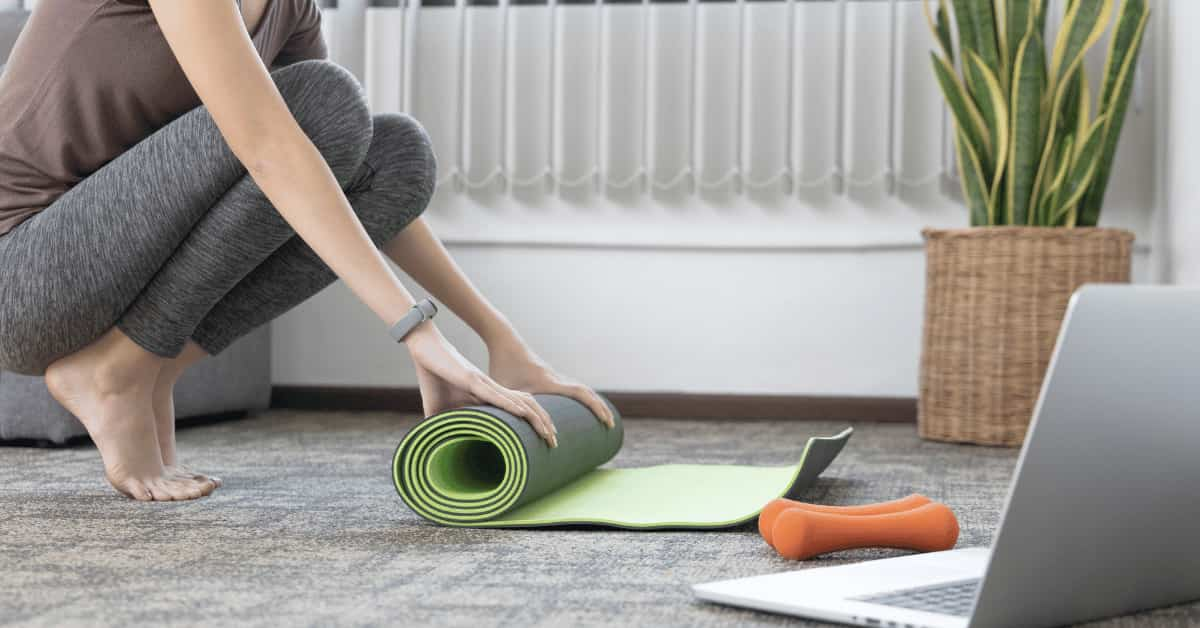
By engaging in regular physical activity, people with social anxiety can reduce their stress and anxiety levels, improve their mood and self-esteem, and promote better sleep (Sharma, Madaan, & Petty, 2006).
Exercise provides a sense of control and accomplishment and can be a useful coping strategy for social anxiety.
Remember, it is important to consult a health care professional before starting and exercise routine (or making significant changes to an existing one).
For a fact sheet (PDF) on the importance of regular physical activity and some practical tips on how to exercise if you suffer from social anxiety, simply click here.
Brief: Regular physical activity, even light to moderate exercise, can help reduce stress and anxiety levels, boost self-esteem, and promote better sleep, making it a beneficial coping strategy for those with social anxiety.
As you can see, improving your sleep, diet, and physical activity can significantly impact your health and well-being, particularly if you struggle with social anxiety.
By incorporating these lifestyle choices into your daily routine, you can create a foundation for managing your symptoms and enhancing your quality of life.
With that foundation in place, we can now focus on the tips and exercises that you really came here for.
Part II: Raising Self-Awareness
In this category, we will discuss how to increase your self-awareness to better understand your social anxiety. This includes recognizing ongoing psychological experiences, possible triggers and underlying causes.
By becoming more aware of your thoughts, emotions and physical sensations, you can manage anxiety in the moment and develop a more balanced and calm mindset.
Let us have a look at four practical exercises to help you develop these qualities.
Mindfulness Mediation
Regular mindfulness meditation practice has been shown to bring a host of benefits, including improved attention control and focus (Norris, Creem, Hendler, & Kober, 2018).
When you meditate, you train your mind to stay present in the moment, which can help improve your overall ability to concentrate.
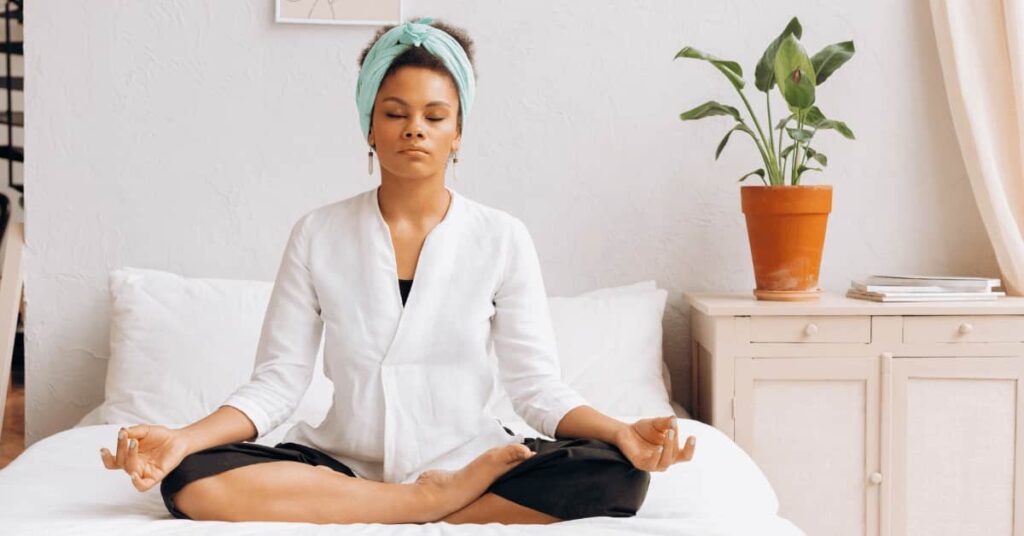
By focusing on your breathing, sensations in your body, or other focal points, you can train your mind to let go of distractions and negative thoughts.
This is especially helpful for people with social anxiety, who may experience intrusive and excessive worries about what others think of them.
With improved attention control and focus, people with social anxiety may feel more confident in social situations and be less likely to get caught up in self-doubt or negative thoughts.
They may also be better equipped to manage anxiety triggers, such as public speaking or socializing with new people, by staying present in the moment and focusing on their breath or other grounding techniques.
Additionally, mindfulness meditation has been shown to reduce symptoms of anxiety, including worry and rumination, which can further enhance quality of life and well-being (Parmentier et al., 2019).

Another key benefit of mindfulness meditation is that it helps you develop a greater awareness of your mental processes, including thoughts and emotions.
With regular practice, you can learn to observe your thoughts and feelings without judgment, allowing you to respond to them in a more balanced and effective way.
This increased self-awareness can help you recognize negative thought patterns and replace them with more positive and helpful ones.
In addition, mindfulness meditation can help people identify and efficiently respond to physical sensations associated with anxiety, such as rapid heartbeat and shallow breathing.
By learning to recognize and control these physical responses, you can reduce the impact that anxiety has on your life and become better equipped to manage it.
Furthermore, mindfulness meditation can help you develop resilience and coping skills that can be applied in stressful situations, such as social gatherings.
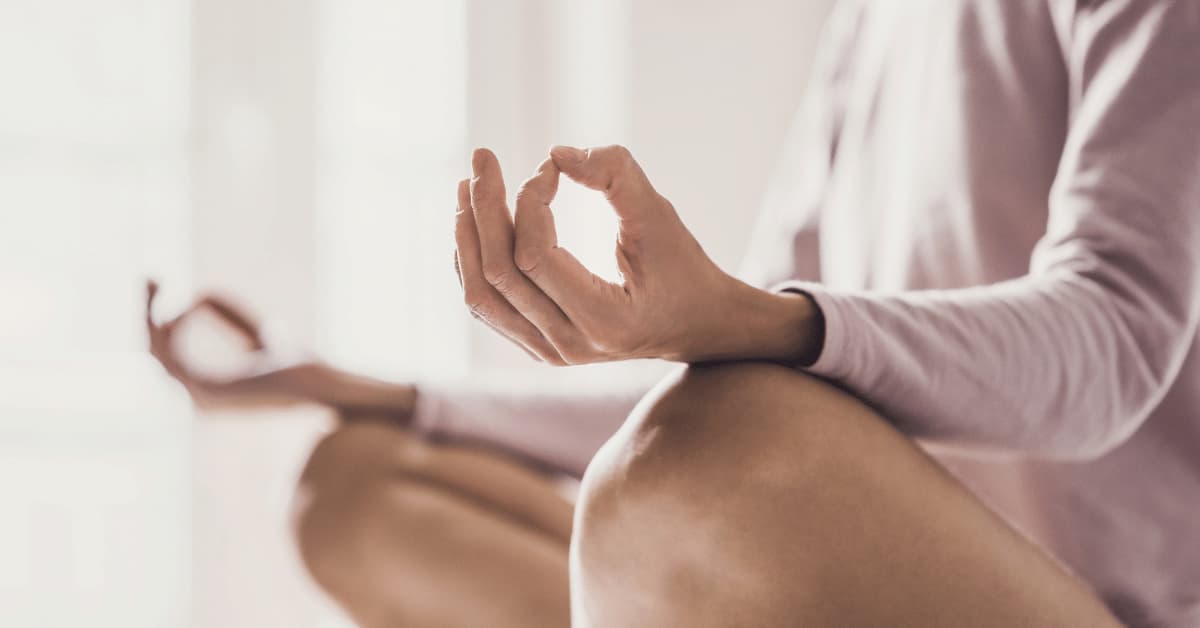
We have written a thorough introductory guide to mindfulness, which includes guided meditations specifically designed for socially anxious people.
It also summarized the science regarding the benefits of mindfulness meditation for socially anxious people. You can access it by clicking here.
For a worksheet (PDF) with practical mindfulness meditation exercises specifically designed for people with social anxiety, simply click here.
We highly recommend Headspace as an app for guided meditations. It makes it easy to get started and stick with the practice, while giving you a comprehensive understanding of how mindfulness and meditation work.
You can click below to download the app. You can try the app for free during 7-14 days to see if you like it. If you use our link, we may receive a small commission for the referral at no cost to you. Thank you for your support!
Brief: Mindfulness meditation improves attention control and focus, allowing individuals with social anxiety to stay present in the moment, manage triggers, and reduce symptoms. It also helps increase self-awareness and develop positive thought patterns, physical response control, and coping skills.
Personal History Timeline
The personal history timeline can be a powerful technique to help people with social anxiety identify possible underlying causes of their anxiety.
Start by creating a timeline of your personal history, which is essentially a visual representation of significant events and experiences in your life.

Try to identify significant events in your life, both positive and negative, that have shaped your beliefs, values, and behaviors related to social situations.
Once identified, integrate these events into the timeline in chronological order, focusing on how they relate to your social anxiety.
Next, take some time to reflect on each event and write down any thoughts or emotions that arise.
This can be done through free writing, which involves setting a timer for a set amount of time (e.g., 10 minutes) and writing continuously without pausing to edit or censor your thoughts.
As you reflect on your past experiences and write down your thoughts and emotions, pay attention to any recurring themes or patterns that emerge. These may provide insight into possible underlying causes of your social anxiety.

It is important to keep in mind that this exercise can be emotionally challenging, so be sure to practice self-care and seek support if you need it.
However, the information gained through this exercise can be very valuable in helping you better understand your social anxiety and begin to overcome it.
To get an idea of the most common causes of social anxiety disorder, you can first read our article which discusses this topic. You can access it by clicking here.
For a worksheet (PDF) with detailed instructions on creating a personal history timeline, simply click here.
Brief: The personal history timeline is a powerful technique to identify possible underlying causes of social anxiety. Create a timeline of significant events, reflect on them through free writing, and look for recurring patterns.

Journaling
Journaling is a form of expressive writing that can be a powerful tool for people with social anxiety to better understand their thoughts, emotions and behaviors.
Through journaling, you can start to better understand the underlying mechanisms of your anxiety and develop coping strategies to manage it more effectively.

A coping strategy might be something like practicing deep breathing or visualization exercises before entering a feared social situation.
Another example might be to challenge negative self-talk and replace it with more positive, realistic thoughts. We will talk about such coping strategies in the next category.
Through journaling, you can identify patterns in your thoughts and behaviors. By writing down your thoughts and feelings, you can recognize common triggers that contribute to your anxiety and insecurity in social settings.
For example, if a person always feels anxious in certain social situations, they may be able to identify a specific trigger or underlying belief that contributes to their anxiety.
Once these patterns are discovered, the person can work to change their thoughts and behaviors to better cope with and manage their anxiety.

Another benefit of journaling is that it provides a safe and private space to explore thoughts and emotions without judgment.
When journaling, it is important to be honest with oneself and avoid self-criticism. You should focus on expressing your thoughts and feelings without pressure to achieve a certain outcome.
This can help you feel more in control of your anxiety and promote a sense of self-awareness.
To begin journaling, you can set aside time each day to write.
This can be done in any form, such as writing about your day, your thoughts and feelings about events or situations you have encountered, or any thoughts or worries that are bothering you.
Some people may find it helpful to focus on the positive aspects of their day or the progress they have made in managing their social anxiety.

The key is to use the journal as a tool for reflection and self-exploration.
It is important to note that while journaling can be a useful tool for people with social anxiety, it is not a substitute for professional therapy. Working through past trauma or experiences should be done with the help of a trained therapist.
For a worksheet (PDF) with journaling instructions specifically designed for people with social anxiety, simply click here.
Brief: Journaling is a tool for self-reflection and exploration that can help individuals with social anxiety understand their triggers and develop coping strategies. It provides a safe and private space for exploring thoughts and emotions without judgment.
Identifying Triggers
Identifying triggers is a crucial step in managing social anxiety. We already mentioned them in the previous section on journaling, as journaling can be a great way to explore them.
Exploring triggers is important because it can help people with social anxiety better understand the specific situations or circumstances that make them anxious.

Once you identify your triggers, you can develop effective coping strategies to manage your anxiety.
For example, if a person with social anxiety experiences high levels of anxiety in crowded places, identifying this trigger can help them plan for such situations and prepare coping strategies to manage their anxiety when they have to face them.
It can also help you better understand your thought and behavior patterns, which is crucial to challenging and adjusting them.
Triggers can be external, such as a particular situation or event, or internal, such as negative self-talk or physical sensations like a racing heart or sweating.
Triggers for social anxiety can vary from person to person and depend on the individual’s specific experiences and circumstances.
However, some common triggers may include:
- Meeting new people
- Speaking in front of a group
- Being the center of attention
- Making small talk
- Attending social events
- Eating or drinking in public
- Using public restrooms
- Being assertive or expressing one’s opinions
- Being criticized or judged
- Being in an unfamiliar or crowded place
- Feeling like an outsider or being excluded from a group
There are different techniques you can use to explore your triggers. One of them is journaling. If you choose this technique, we recommend that you revisit the previous section for more detailed instructions.
Write down situations or events that seem to cause your anxiety and how you feel in those situations. Look for patterns and commonalities, such as specific people, places, or types of events that consistently cause you anxiety.
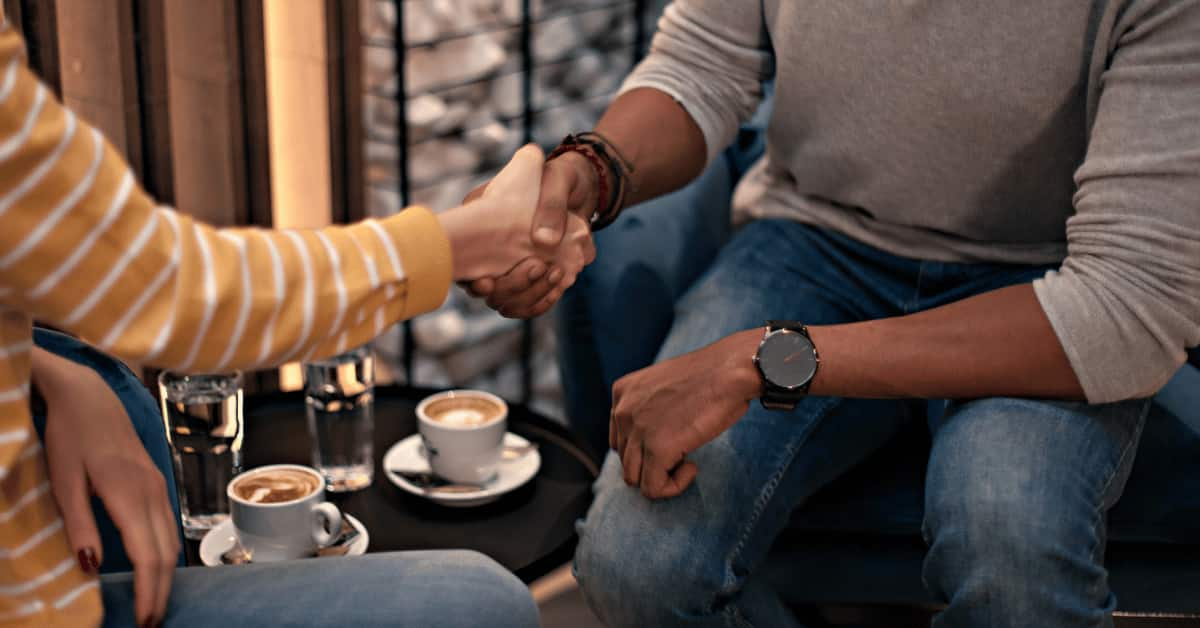
You can also use your journal to write down your physical symptoms, thoughts, and emotions that arise when you experience social anxiety.
Another way to identify triggers is to pay attention to your body’s physical reactions. When you start to feel anxious, note what is happening in your body.
Do you feel tightness in your chest, a racing heart or sweaty palms? Do you feel dizzy or lightheaded?
Identifying these physical symptoms can help you recognize when you are starting to feel anxious (when you are being triggered) and take steps to manage your anxiety before it gets worse.
Finally, it may be helpful to talk to a trusted friend or therapist about your triggers. Sometimes an outside perspective can help you identify things that you may not have been aware of before.
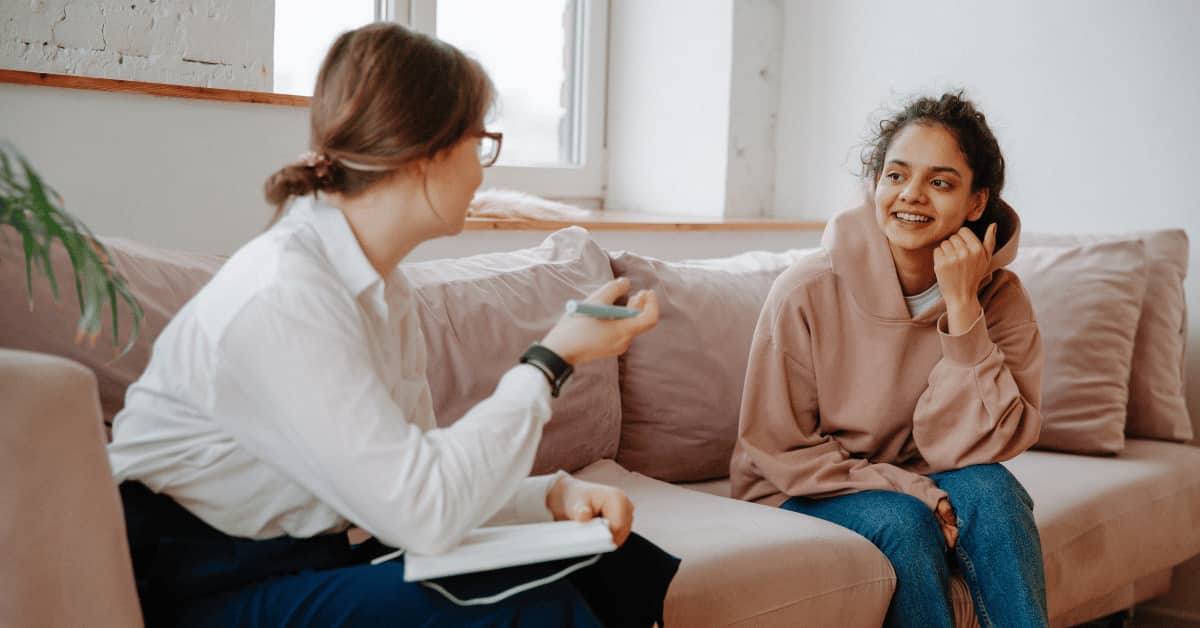
Remember that identifying your triggers does not necessarily relieve you of your anxiety, but it provides a solid foundation for the next category: acquiring appropriate coping strategies.
We have created a worksheet (PDF) that will help you identify your main triggers. To access it, simply click here.
Brief: Identifying triggers is important for managing social anxiety, as it helps people better understand what makes them anxious and develop coping strategies for distressing situations.

Part III: Acquiring Coping Strategies
Coping with social anxiety can be difficult, but there are several strategies that can help you manage your symptoms and regain a sense of control.
These strategies involve a variety of techniques that can help you calm your mind and body, challenge negative thoughts, and gradually face your fears.
Let’s have a look at them.
Deep Breathing
Deep breathing is a fundamental relaxation technique that has been used for centuries to calm the mind and reduce anxiety. It is a simple yet powerful tool that can be easily incorporated into your daily routine.
Deep breathing helps to activate the parasympathetic nervous system, which helps to slow down your heart rate, lower blood pressure, and reduce feelings of stress.
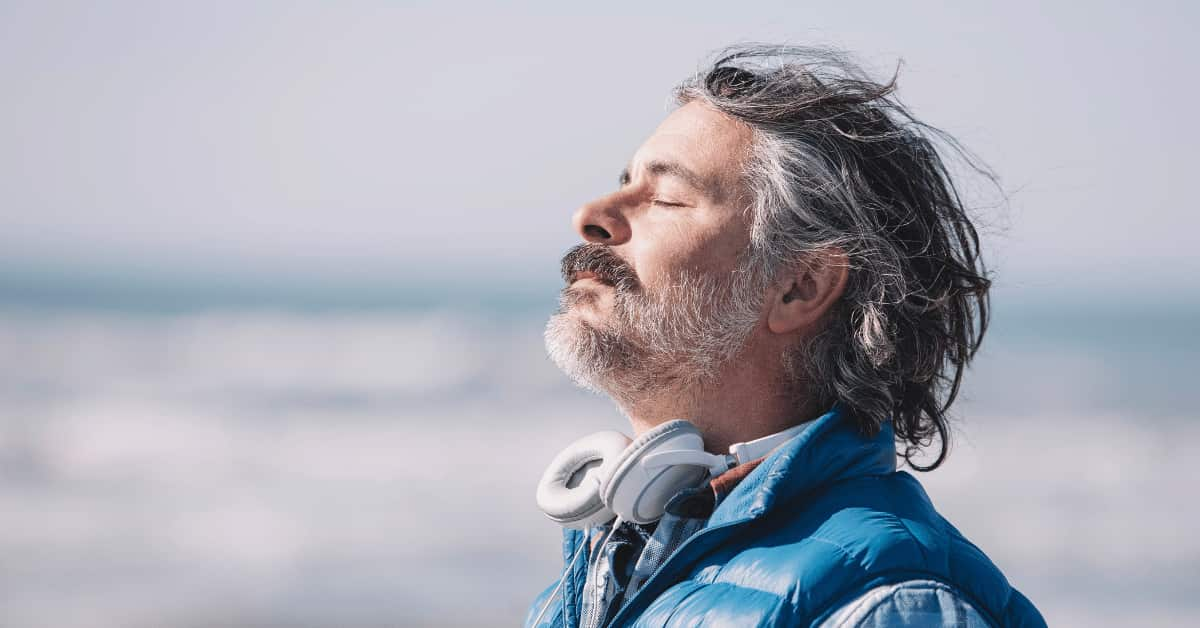
People with social anxiety may find deep breathing especially helpful because it can be done discreetly in any situation, whether you’re at home, work, or in a social setting.
The technique helps to quiet the mind and reduce negative self-talk, which can often trigger anxiety.
Practicing deep breathing regularly can also help you to feel more in control of your emotions and better equipped to manage social anxiety when it arises.
To learn and practice deep breathing, find a quiet place where you won’t be disturbed. Sit or lie down comfortably, and place your hands on your stomach.

Breathe in slowly through your nose, allowing your belly to expand as you inhale. Hold your breath for a few seconds, and then exhale slowly through your mouth, feeling your belly contract as you breathe out.
Repeat this process for several minutes, focusing on the sensation of air moving in and out of your body. You can also try counting to four as you inhale, holding for four, and exhaling for four, as this helps to regulate your breathing and improve relaxation.
Deep breathing can be an effective tool to help you manage social anxiety, but it may take some practice to become comfortable with the technique.
Set aside a few minutes each day to practice deep breathing, and over time you may find that it becomes a natural part of your routine.
Once you are familiar with this practice, you can use it before and during stressful social situations, as it will help you manage your anxiety and nervousness and keep them at bay.
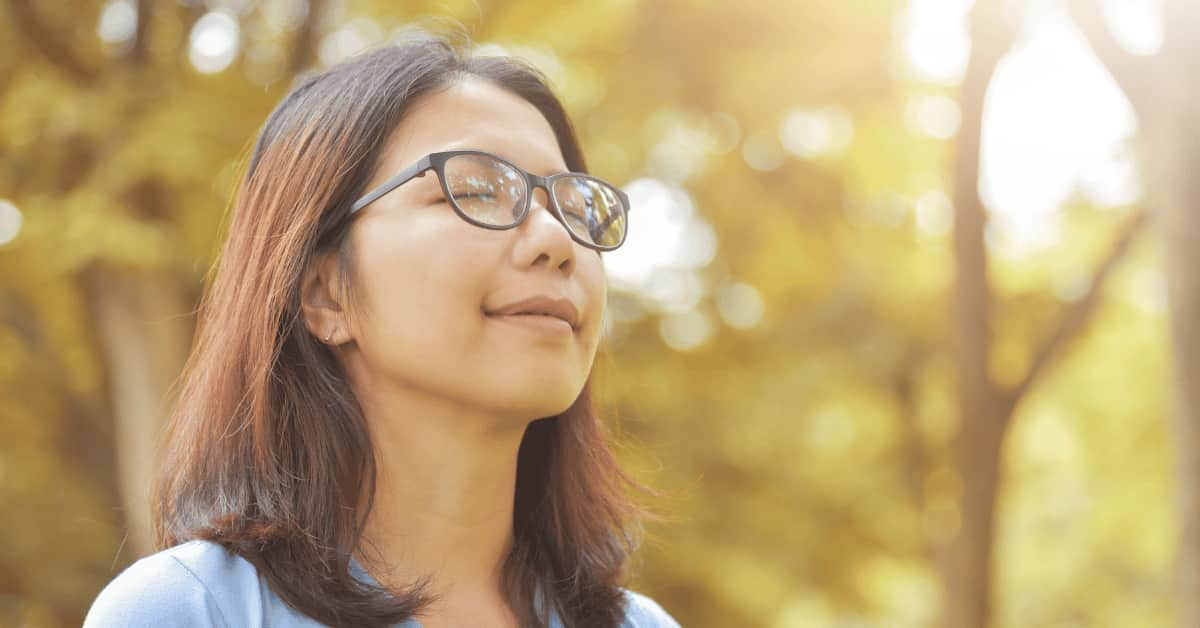
Remember that deep breathing is a simple but powerful way to take control of your mental and emotional state, and to help you feel more calm and centered in any situation.
Also: Before beginning any deep breathing exercises, consult with your doctor to make sure they are appropriate for your individual health needs.
For a worksheet (PDF) with detailed instructions on how to perform deep breathing, simply click here.
Brief: Deep breathing is a simple yet effective technique for reducing anxiety and calming the mind, and can be used before and during social situations. By practicing slow, deep breaths, individuals can increase relaxation and decrease anxiety symptoms.
Attention Training
Attention training is a coping strategy for social anxiety that involves learning to direct one’s attention at will.
This technique is often used in cognitive-behavioral therapy to help individuals with social anxiety retrain their brains to focus on positive or neutral stimuli rather than on perceived threats or negative thoughts.
The idea behind attention training is that socially anxious people tend to be hyper-focused on negative social cues, such as rejection or criticism, and as a result, may miss positive or neutral social cues that could help reduce their anxiety.
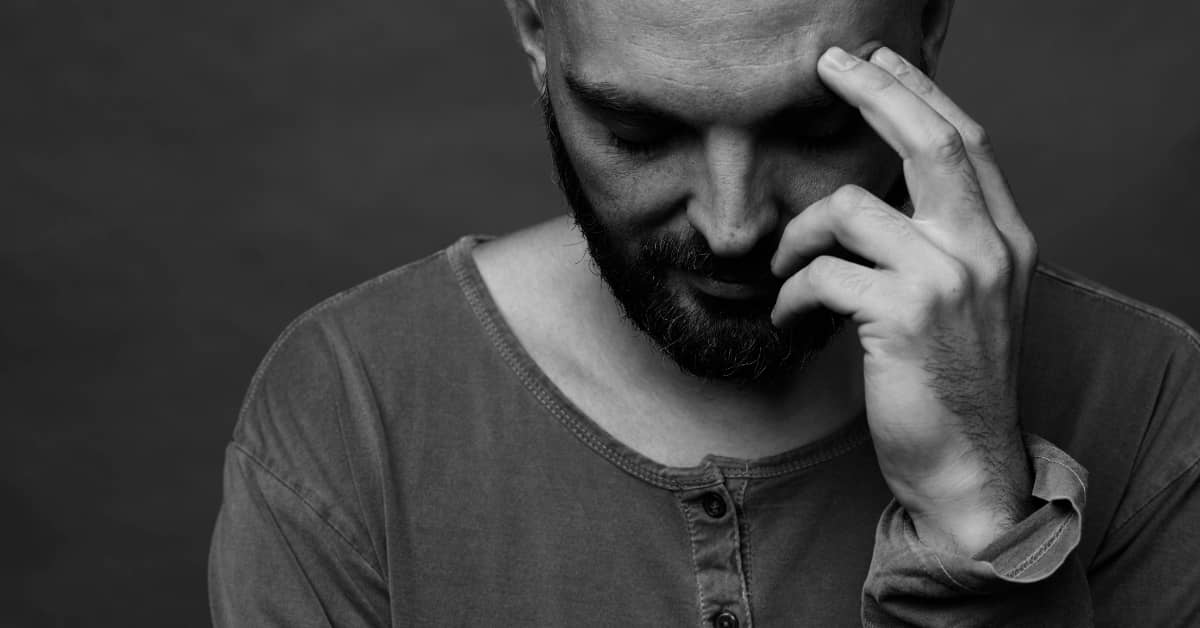
By learning to direct your attention at will, you can train yourself to focus on positive or neutral cues, and thereby reduce your overall level of anxiety.
Attention training typically involves a series of exercises designed to help people become more aware of their thought patterns and learn to control their attention.
One common exercise involves focusing on a neutral or positive image, such as a beautiful landscape or a happy memory, and trying to hold that image in one’s mind for an extended period of time.
Another exercise involves focusing on one’s breath or a specific sensation in the body, such as the feeling of one’s feet on the ground.
Over time, as you become more adept at directing your attention at will, you may begin to notice a reduction in anxiety levels, both in social situations and in general.
This is because the brain is a highly adaptable organ, and with practice, you can learn to rewire your neural pathways to focus on positive or neutral cues rather than negative ones.
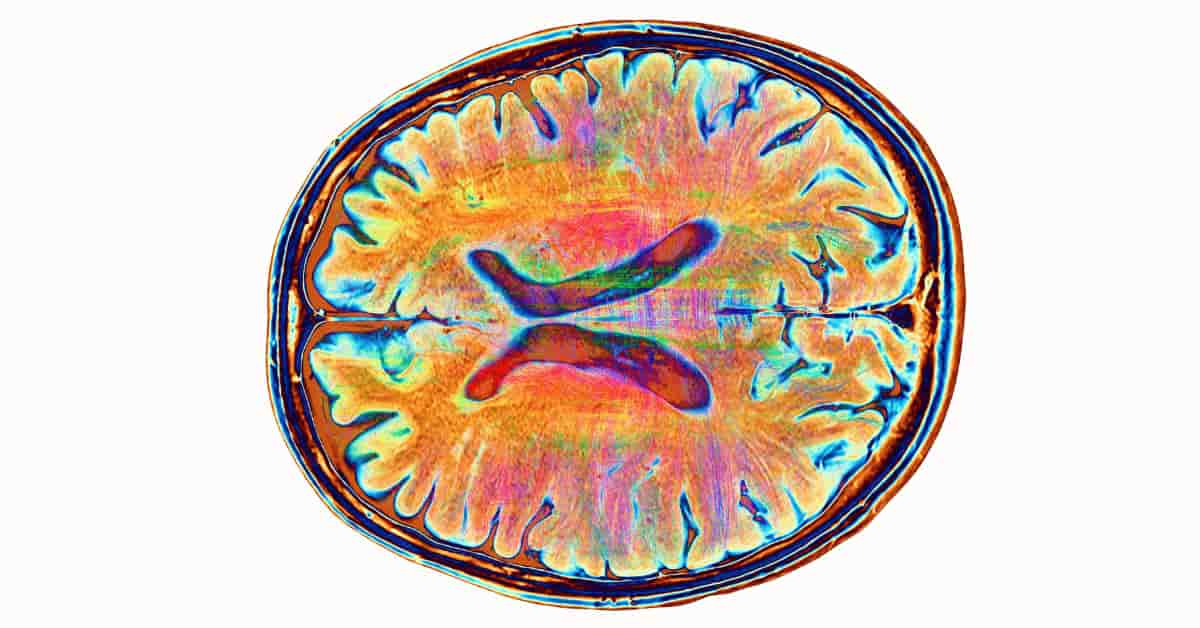
Studies have shown that individuals with social anxiety who receive attention training as part of their therapy show significant reductions in anxiety symptoms and improvements in overall well-being (e.g., Schmidt, Richey, Buckner, Timpano, 2009).
Attention training is best done with the help of a qualified and experienced therapist. However, there are simple exercises to improve your ability to direct and focus your attention that you can do for yourself.
For a worksheet (PDF) with exercises that introduce you to attention training, simply click here.
Brief: Attention training is a technique to reduce social anxiety by redirecting attention away from anxious thoughts and social cues. Practicing attention training can improve emotional regulation and reduce the negative impact of social anxiety on daily life.

Visualization Techniques
Visualization techniques involve using your imagination to create a mental image of a calming, relaxing, or empowering situation.
This technique can help reduce anxiety and increase self-confidence, especially for people with social anxiety.
To practice positive visualization, close your eyes and imagine yourself in a social situation where you feel confident and at ease, such as at a party or in a group conversation.

Visualize yourself making a good impression on others, expressing yourself clearly and confidently, and enjoying the social interaction. Focus on the sights, sounds, and sensations of the imagined situation, and allow yourself to fully experience it.
Visualizing yourself reacting in a healthy, adaptive and constructive way to social mishaps or other uncomfortable social situations is another useful application of visualization techniques.
For instance, rather than attempting to conceal your physical anxiety responses during a presentation, you could visualize yourself how you confidently own them and make a witty remark.
By imagining yourself responding calmly and confidently to such situations, you can help reduce the anxiety and fear that can come along with them.
This technique can also help build resilience and confidence, allowing you to approach future situations with a more positive mindset.

Visualization can also be a powerful tool to help socially anxious individuals reframe negative thoughts and experiences into positive ones.
By visualizing successful outcomes, the mind can learn to focus on the positive aspects of a situation, rather than the negative ones. This can help reduce anxiety and improve overall well-being.
Additionally, you can use traditional visualization techniques by imagining yourself in a peaceful place, such as a beach, forest, or meadow, in order to induce a relaxation response. Focus on the details of the environment, the sounds, the smells, and the sensations.
Visualization is a versatile technique that can be practiced at any time, whether you’re feeling anxious or not.
Try practicing positive visualization regularly, for example, each morning or before going to sleep. With practice, positive visualization can help you feel more confident and empowered in social situations.
For a worksheet (PDF) with instruction for a positive visualization exercise for people with social anxiety, simply click here.
Brief: Visualization can help people with social anxiety by allowing them to mentally practice and rehearse successful social interactions, feel more confident and in control in social situations, and reframe negative thoughts and experiences into positive ones.
Using an Upright Posture
Posture can have a significant impact on how confident we feel in social situations, and adopting an upright, confident posture can help to alleviate social anxiety symptoms (Weineck, Schultchen, Hauke, Messner, & Pollatos, 2020).
When we stand up straight and hold our head high, it can signal to our brain that we are confident and in control, which can lead to a positive feedback loop that reinforces this feeling.

Research has shown that adopting an upright posture can also have a physiological effect on our bodies, increasing levels of testosterone and decreasing levels of cortisol, a stress hormone (Carney, Cuddy, & Yap, 2010).
This can help us to feel more relaxed and confident in social situations.
Interestingly, it was also found that “faking” an upright posture can have similar effects on our neurobiology, leading to an increase in confidence and a decrease in social anxiety.
This is because our body language can send powerful signals to our brain, which can impact our thoughts, feelings, and behavior.
So, if you struggle with social anxiety, adopting an upright, confident posture can be a simple but effective tool for boosting your confidence in social situations.

Remember that even if you don’t initially feel confident, “faking it” by standing straight and tall can make your brain think you are confident and change its chemistry accordingly.
For an information sheet (PDF) on how to use an upright posture to increase your confidence in social situations, simply click here.
Brief: Assuming a confident, upright posture can positively impact one’s mood and self-perception. “Faking it” through a confident posture can lead to actual changes in the brain and improve one’s confidence and reduce social anxiety momentarily and over time.

Progressive Muscle Relaxation
Progressive muscle relaxation is a technique that can help release physical tension and reduce anxiety symptoms.
This method involves systematically tensing and then releasing muscle groups throughout the body, resulting in a feeling of deep relaxation.
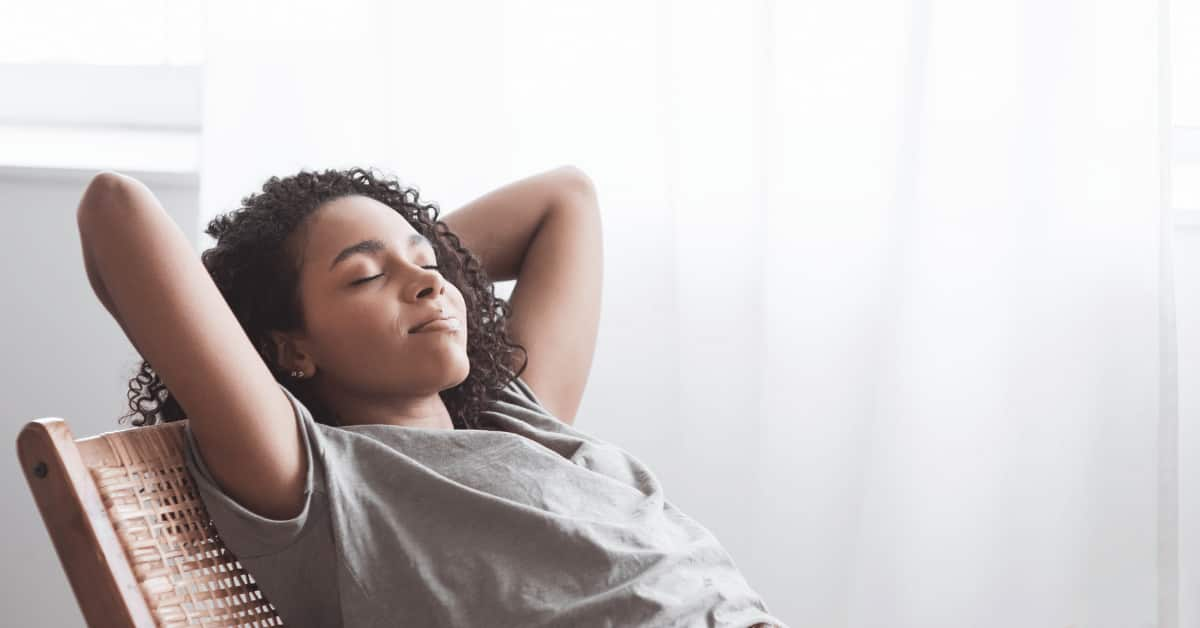
To practice progressive muscle relaxation, it’s important to find a quiet and comfortable place to sit or lie down.
Begin by taking a few deep breaths, focusing on the sensation of the breath entering and leaving your body.
Next, start by tensing the muscles in your feet and toes, holding the tension for 5-10 seconds, and then release the tension and allow the muscles to fully relax.
Then progressively move up to your calves, thighs, buttocks, abdomen, chest, arms, hands, neck, and head, tensing and releasing each muscle group in turn.
The physical sensations of tension and relaxation can help you become more aware of the physical sensations in your body and how these relate to your anxiety.
Progressive muscle relaxation can also help reduce muscle tension and other physical symptoms associated with social anxiety, such as sweating, trembling, or a rapid heartbeat.

People with social anxiety can practice progressive muscle relaxation regularly, either as a standalone technique or in combination with other relaxation techniques, such as deep breathing or visualization.
It can be helpful to practice this technique before a social event, or as a way to unwind after a stressful situation.
For a worksheet (PDF) with detailed instructions on how to perform progressive muscle relaxation, simply click here.
Brief: Progressive Muscle Relaxation is a technique that involves contracting and then releasing different muscle groups in the body, helping to release physical tension and reduce anxiety, making it a useful tool before and after stressful social situations.
Challenging Negative Thoughts
Challenging negative thoughts is a key component of cognitive-behavioral therapy (CBT) and is very important in the treatment of social anxiety.
Negative thoughts, such as catastrophizing, overgeneralizing, and assuming the worst, can intensify feelings of anxiety and keep people trapped in a cycle of avoidance.
By learning to challenge and reframe negative thoughts, people with social anxiety can break free from this cycle and build more adaptive thinking patterns.
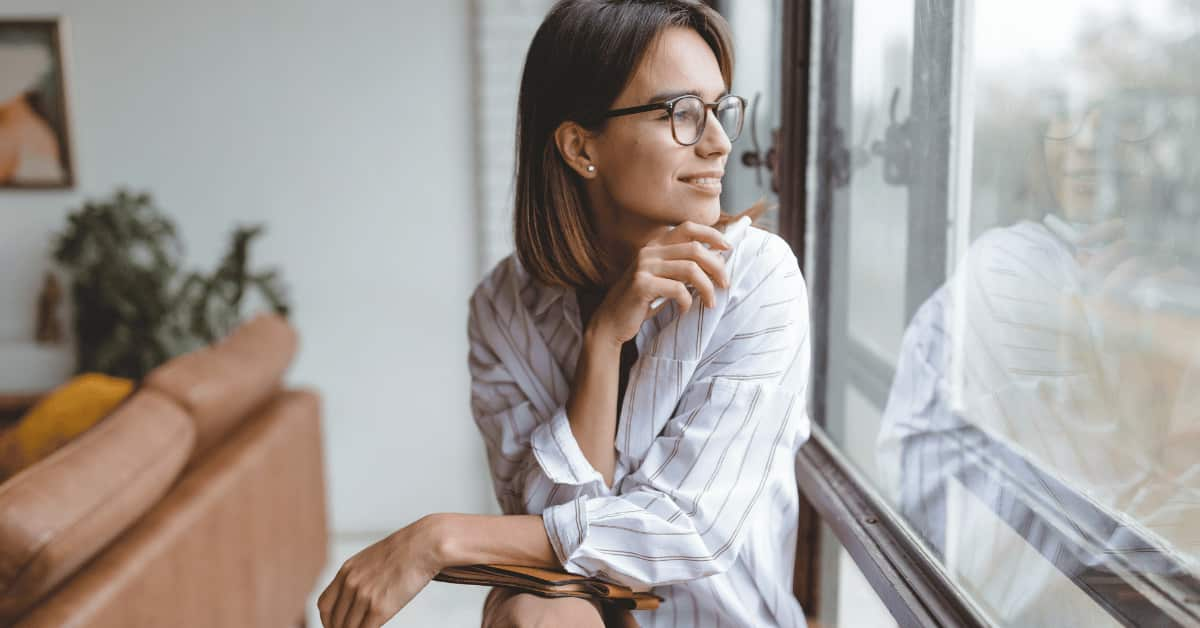
To challenge negative thoughts, start by paying attention to them and writing them down. Then, ask yourself if they are based on evidence or distorted by cognitive biases.
Cognitive biases are automatic thought patterns that can skew our perception of reality and contribute to anxiety. They are especially common in people with social anxiety who tend to interpret social situations in a negative and self-critical way.
Challenging negative thoughts can help reduce cognitive biases by forcing us to re-examine our automatic assumptions and search for more balanced and evidence-based interpretations of social situations.
By doing so, we can learn to recognize and correct our biases, and develop a more realistic and positive outlook on social interactions.
Consider alternative explanations for the situation and rate the likelihood of each one. Try to find evidence that supports more balanced, positive thoughts.
For example, instead of thinking, “I’m going to be judged by everyone at the party,” you could reframe the thought as: “I might feel a bit uncomfortable, but I’m a likable person and I can handle this.”

It can also be helpful to use positive self-talk and affirmations to reinforce the new thinking patterns. We will address these in the next sub-section.
With practice, challenging negative thoughts can become an automatic response to anxious thinking, leading to greater confidence and resilience in social situations.
It’s important to note that working with a therapist is recommended to learn this process. However, with practice you can also learn to challenge your negative thoughts on your own.
For a worksheet (PDF) that encourages you to challenge your negative thoughts and guides you through the process, simply click here.
Brief: Challenging negative thoughts can help people with social anxiety reduce the impact of cognitive biases and develop a more positive outlook. This can be achieved by examining the evidence, reframing the thoughts, and focusing on positive alternatives.

Practicing Positive Self-Talk
Positive self-talk is an important coping strategy for social anxiety. It involves speaking kindly to yourself and replacing negative self-talk with positive affirmations.
Self-talk matters because the way we talk to ourselves influences our emotions, behaviors, and self-perceptions.
For those with social anxiety, negative self-talk can reinforce feelings of inadequacy and contribute to a cycle of avoidance and isolation.

Positive self-talk can help challenge and reframe negative thoughts, build confidence, and reduce anxiety.
By changing from negative to positive self-talk, people with social anxiety can learn to view themselves and the social situations they encounter in a more realistic and balanced way, leading to a greater sense of control and improved well-being.
When you catch yourself thinking negatively, try to reframe the thought in a more positive or balanced way.
For example, instead of saying, “I’m not good enough,” try saying, “I am worthy of love and respect.”
Other examples of positive self-talk for people with social anxiety may include the following:
- “It’s okay to make mistakes, everyone does.”
- “I am worthy of friendship and connection.”
- “I can handle this situation and get through it.”
- “It’s normal to feel anxious in social situations, and that’s okay.”
- “I am not defined by my anxiety, and I can work through it.”
You can also write down positive affirmations of this kind and read them to yourself regularly.
Practicing positive self-talk can help you challenge negative thought patterns and replace them with more realistic and positive ones.
This can lead to increased self-esteem, improved mood, and a greater sense of control over your thoughts and feelings.

It can be helpful to use present-tense language and to use “I” statements to personalize the affirmations. It’s also important to be consistent and practice positive self-talk regularly to make it a habit.
While it may take time and effort to develop this skill, it can be a powerful tool for managing social anxiety. Remember to be kind and patient with yourself, and to celebrate small victories along the way.
For a worksheet (PDF) that gets you started with positive self-talk and helps you develop your own personal affirmations, simply click here.
Brief: Positive self-talk is a powerful coping tool for social anxiety. It can help challenge negative thoughts, build confidence, and reduce anxiety. Positive self-talk can help people view themselves and social situations more realistically, leading to greater control and well-being.
Seeking Gradual Exposure
While this exercise requires the guidance and collaboration of a professional therapist, it is important to understand the principles and dynamics of it, as it is one of the most effective tools to reduce social anxiety.
Gradual exposure is a type of exposure therapy that involves facing feared social situations in a controlled, step-by-step manner.
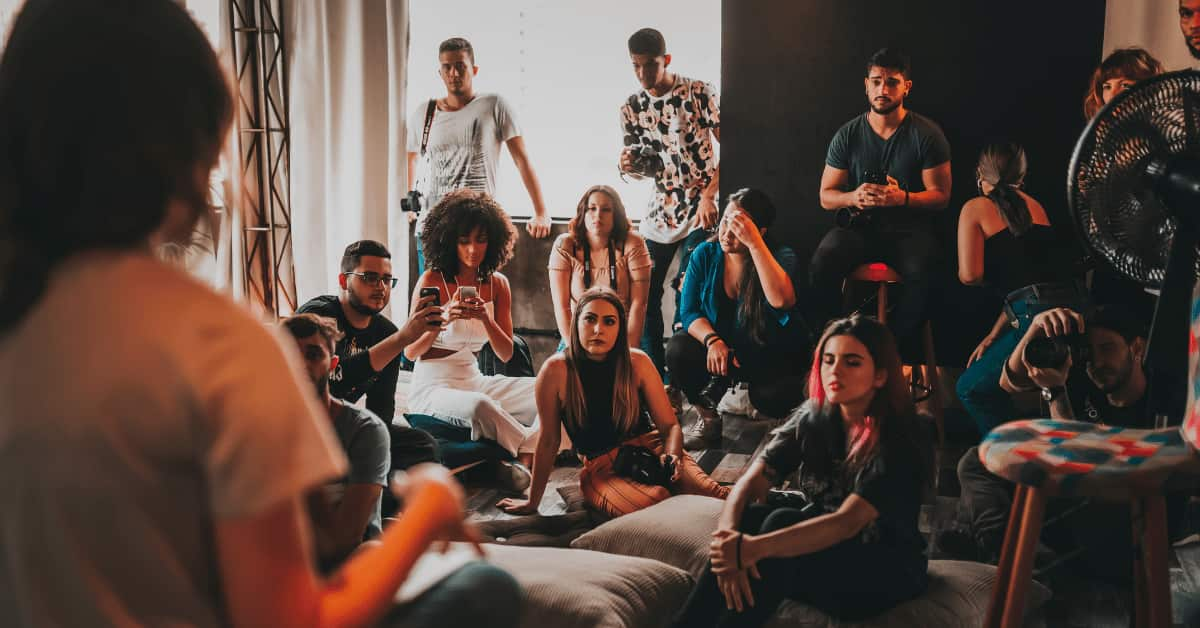
The idea is to start with less anxiety-provoking situations and gradually work up to more challenging ones. This allows socially anxious people to build confidence and mastery in facing situations that typically elicit anxiety.
Gradual exposure works by helping you learn that feared situations are not as threatening as you might have believed.
With repeated exposure, the brain learns to associate the situation with reduced anxiety rather than fear. Over time, you can learn to tolerate and even enjoy previously avoided situations.
To practice gradual exposure, start by making a list of feared social situations, ranked from least to most anxiety-provoking.
Begin with the least anxiety-provoking situation and gradually work up to more challenging ones. It’s important to stay in each situation long enough for the anxiety to decrease, even if it takes some time.

Deep breathing and other relaxation techniques can be helpful during exposure exercises.
It’s important to note that gradual exposure should be done with the guidance of a trained therapist who can help design an exposure hierarchy and provide support during the process.
However, with time and practice, individuals can learn to engage in gradual exposure on their own and continue to challenge themselves in social situations.
To learn more about this type of exposure, we recommend you read our article about cognitive behavioral therapy (CBT) for social anxiety.
It includes an example of an exposure hierarchy and will give you an idea of what to expect if you choose this type of therapy. You can access it by clicking here.
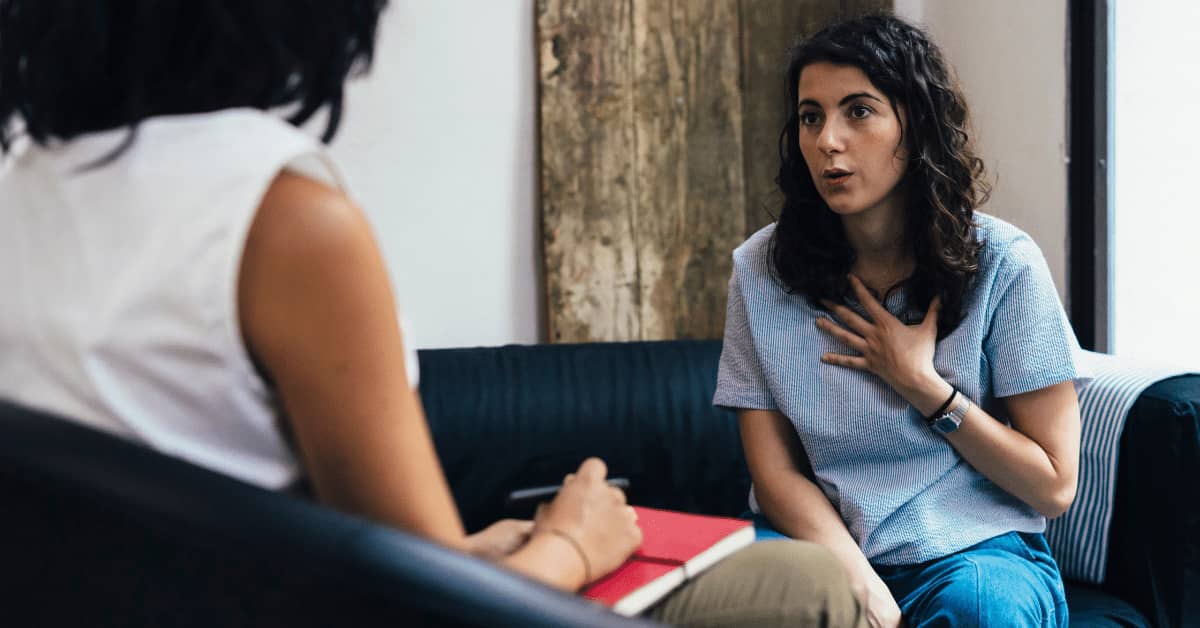
It is important to note that there are other exposure techniques that can be effective for social anxiety, such as imaginal exposure, interoceptive exposure, and shame attacking exercises.
Imaginal exposure involves visualizing a feared social situation, while interoceptive exposure involves deliberately inducing physical sensations associated with anxiety.
Shame attacking exercises involve intentionally engaging in behaviors that one may find embarrassing or shameful. However, these techniques should be carried out with the guidance of a qualified therapist, who can ensure their safety and effectiveness.
By the way, we have written an article about shame attacking exercises, which provides some practical examples. You can access it by clicking here.
For a worksheet (PDF) that outlines practical guidelines for seeking gradual exposure to feared social situations, simply click here.
Brief: Gradual exposure is a technique that involves facing your fears in a safe environment. It helps to overcome social anxiety by reducing the fear response. With the help of a therapist, feared situations are ranked by difficulty and gradually confronted until they no longer provoke distress.

Part IV: Improving Social Skills
Effective communication is an essential part of reducing social anxiety. Developing strong communication skills can help you interact with others more confidently and comfortably, which reduces your social anxiety and improves your quality of life.
Here are some tips and exercises to help you develop better communication skills.
Practicing Active Listening
Active listening is a communication skill that involves focusing your attention on the speaker and fully understanding their message.
It is not just about hearing what the other person is saying, but also paying attention to their tone of voice, body language, and nonverbal cues.
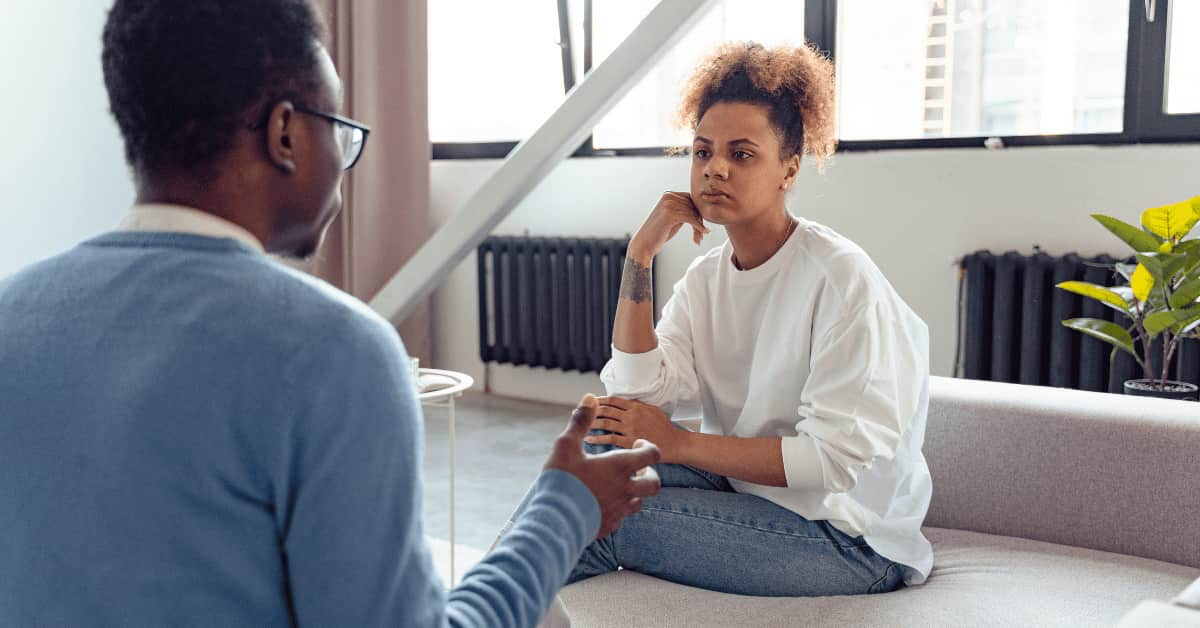
Active listening can help people with social anxiety for a few reasons. Firstly, it helps shift the focus away from oneself and onto the other person, which can alleviate some of the pressure and self-consciousness associated with social interactions.
Instead of worrying about what to say or how to act, active listening allows individuals to be fully present and engaged in the conversation.
In addition, active listening can help build trust and rapport with the other person, as it demonstrates a genuine interest in what they have to say.
This can lead to more positive interactions and a greater sense of connection with others, which can be particularly important for those with social anxiety who may feel isolated or disconnected from others.
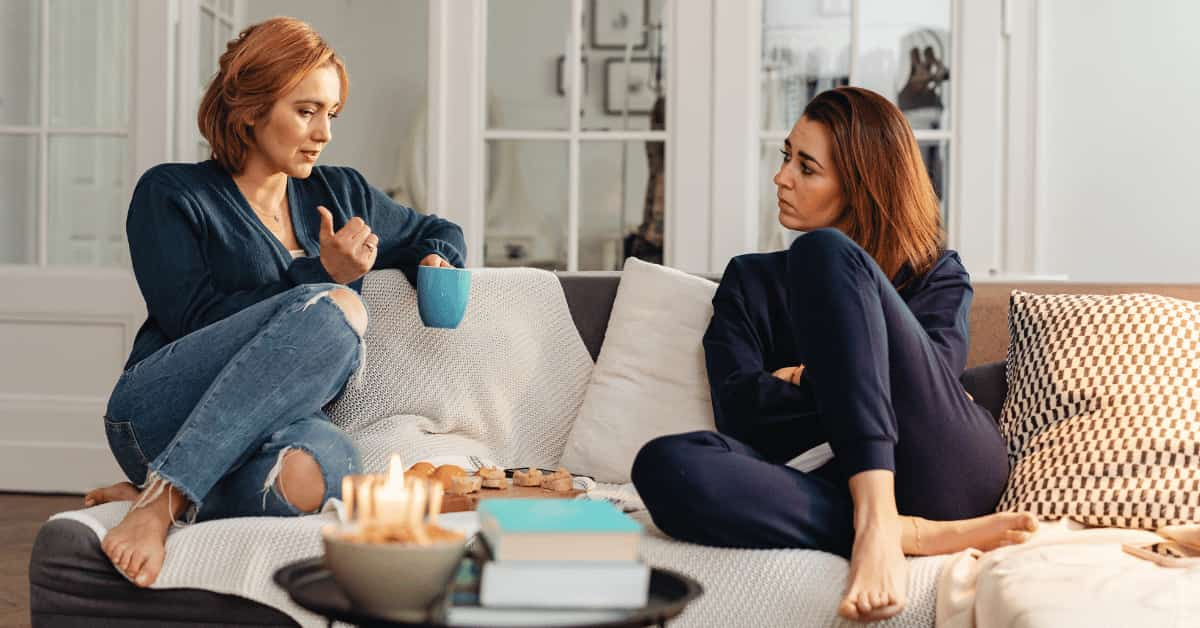
Furthermore, active listening can help reduce misunderstandings and miscommunications, which can be a source of anxiety for many people.
By asking clarifying questions and fully understanding the other person’s message, individuals can feel more confident in their ability to navigate social interactions and communicate effectively.
To practice active listening, start by making eye contact with the speaker and maintaining an open posture. This means facing the person with your arms uncrossed and not fidgeting or appearing distracted.
Next, focus your attention on the speaker and give them your undivided attention. Avoid interrupting or finishing their sentences, and instead, wait until they finish speaking before responding.
It can also be helpful to ask clarifying questions to ensure that you understand what the speaker is saying.
For example, you might say “I want to make sure I understand what you’re saying. Are you saying that…?“
This not only shows the speaker that you are engaged and interested in the conversation, but also helps reduce misunderstandings.
Another helpful tip is to practice reflective listening. This involves paraphrasing what the speaker has said in your own words to show that you have understood their message.

For example, you might say “So what I’m hearing is that you’re feeling frustrated with your job because of the long hours and lack of recognition.“
This not only shows the speaker that you understand their message, but also gives them an opportunity to correct any misunderstandings.
For an information sheet (PDF) that summarizes the basics of active listening and provides some practical guidelines, simply click here.
Brief: Active listening is a communication skill that involves focusing your attention on the speaker and can help people with social anxiety by shifting their focus away from themselves, building trust and rapport with others, and reducing misunderstandings.
Looking for Common Ground
Looking for common ground means finding shared interests or experiences with others, which can be a valuable tool for building connections and reducing social anxiety.
When we discover that we share a common interest or experience with someone, it creates a sense of connection and can help us feel more comfortable in social situations.

For individuals with social anxiety, looking for common ground can be especially helpful. It can provide a way to engage in conversation and take the focus off of one’s own anxiety or discomfort.
To look for common ground, start by asking open-ended questions that invite the other person to share their interests and experiences. Some examples include:
- “What do you like to do in your free time?“
- “Have you seen any good movies or TV shows lately?”
- “What kind of music do you enjoy?“
As the conversation continues, actively listen to the other person and look for areas of shared interest or experience. This could include anything from a shared hobby or favorite book, to a similar life experience or travel destination.
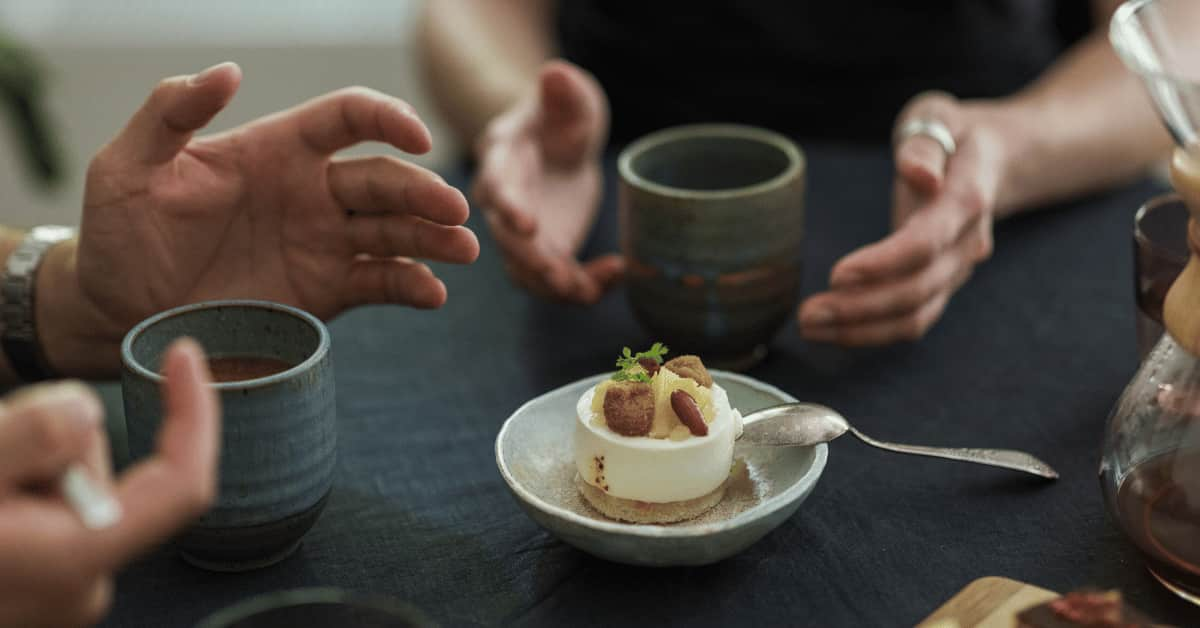
When you discover common ground, use it as a starting point for further conversation. Ask the person more about their experience or share your own related story or opinion.
Remember to keep the conversation balanced and give the other person a chance to speak and share their thoughts.
For an information sheet (PDF) with practical guidelines on how to find common ground with your conversation partners, simply click here.
Brief: Looking for common ground can help build rapport and ease social anxiety. Ask open-ended questions to discover shared interests and experiences.

Engaging in Small Talk
Small talk can be an effective way to reduce social anxiety and build social skills.
While it may seem trivial or pointless, engaging in small talk can help individuals with social anxiety feel more comfortable in social situations and build confidence in their ability to connect with others.

Small talk allows individuals to practice their social skills in a low-pressure environment. It provides an opportunity to practice active listening, looking for common ground, and engaging in conversations with others.
By engaging in small talk on a regular basis, people can build their confidence and comfort level in social situations. This can lead to more meaningful conversations and connections with others.
To engage in small talk, start by observing your surroundings and finding something to comment on or ask about. This could be anything from the weather to a piece of clothing the other person is wearing.
It can also be helpful to ask open-ended questions to encourage the other person to share more about themselves. For example, you might ask about their weekend plans or their favorite hobbies.
Remember to keep the conversation light and casual. Avoid controversial or heavy topics, as these can create tension and discomfort.

It’s also important to be attentive and listen actively to the other person. Show that you’re interested in what they have to say by nodding and making eye contact.
By engaging in small talk regularly, individuals can build their social skills and reduce social anxiety, making it easier to connect with others and build meaningful relationships.
For an information sheet (PDF) with practical guidelines on how to engage in small talk, simply click here.
Brief: Engaging in small talk can help people with social anxiety by providing opportunities to practice social skills and build relationships. Practical guidelines include asking open-ended questions, listening actively, and being curious and positive.
Practicing Self-Disclosure
Self-disclosure is the process of revealing personal information about yourself to others.
It involves being open and honest about your thoughts, feelings, and experiences, with the aim of building trust and connection with the person you are talking to.
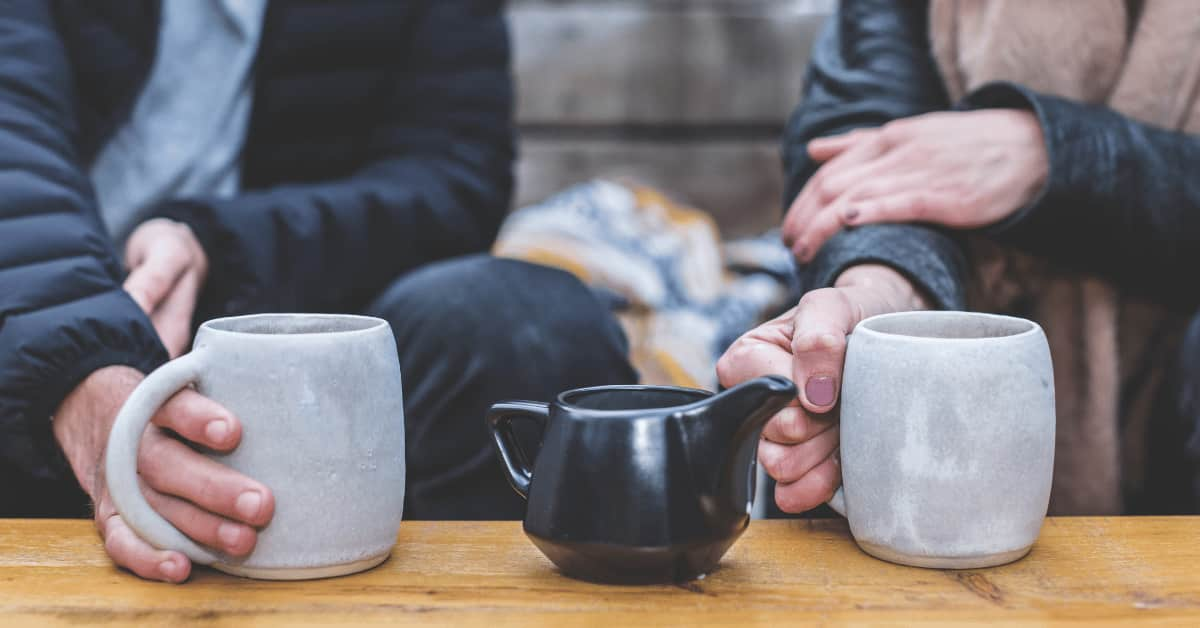
For people with social anxiety, self-disclosure can be a challenging but important step in building relationships. It can help with social anxiety in several ways.
Firstly, it can help individuals to build trust and rapport with others by sharing personal information and experiences.
This can lead to more positive and meaningful interactions, as it allows individuals to form deeper connections with others.
Secondly, self-disclosure can help to reduce feelings of isolation and disconnection, which can be common in people with social anxiety.
By sharing personal information with others, individuals can feel more connected to the people around them and less alone in their experiences.

In addition, self-disclosure can help individuals to overcome their fears of judgment and rejection.
By sharing personal information and being vulnerable, individuals can learn to accept and embrace their own vulnerabilities, as well as the vulnerabilities of others.
You may want to start by identifying a safe and trustworthy person to talk to. This could be a friend, family member, or therapist.
To practice self-disclosure, it’s important to start small and gradually work up to more personal topics. This can help you to feel more comfortable and confident with the process of sharing personal information.
Some practical tips for self-disclosure include sharing something about your day, your interests or hobbies, your feelings or emotions, or your personal goals and aspirations.
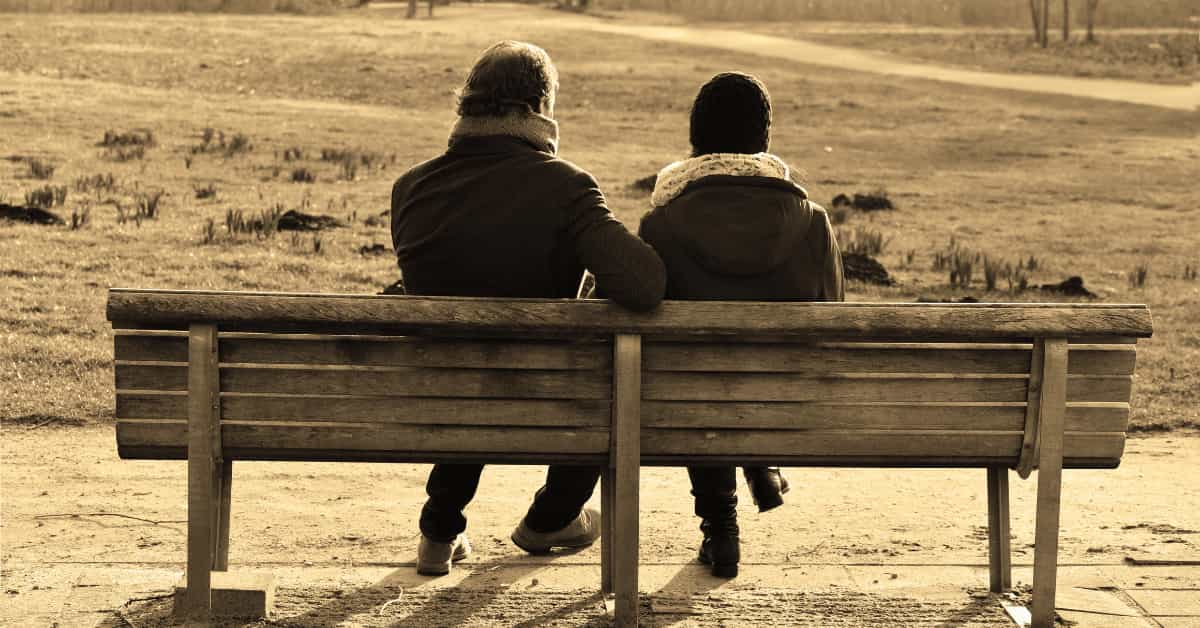
Remember, self-disclosure is a two-way street. Encourage the other person to share about themselves as well, and actively listen to their responses. This can help to build a stronger and more meaningful connection between you and the other person.
For a worksheet (PDF) with practical guidelines on how to share personal and intimate information with people you trust, simply click here.
Brief: Self-disclosure can help those with social anxiety build connections and reduce fear of rejection. By sharing personal experiences and emotions, individuals can establish trust and empathy with others, leading to deeper and more meaningful relationships.

Using Humor
Using humor can be a helpful tool for those with social anxiety because it can alleviate tension, foster a positive atmosphere, and establish a common ground with others.
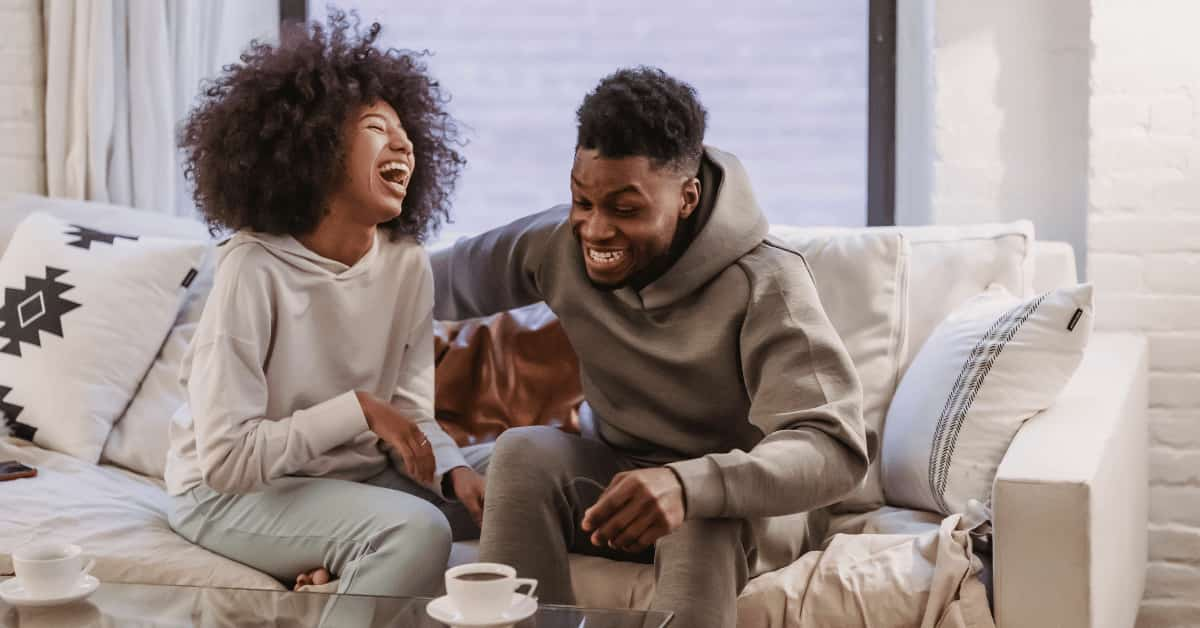
When people are anxious, they can become rigid and overly self-conscious, which can inhibit their ability to connect with others. Humor can break down these barriers by allowing individuals to let their guard down and feel more relaxed and comfortable.
Humor can also help to establish common ground, as laughter is a universal language that everyone can appreciate. By using humor, individuals can build rapport with others and establish a shared sense of humor or perspective.
Additionally, humor can be a way to cope with social anxiety. By using humor to acknowledge and even make light of one’s anxiety, individuals can feel more in control of the situation and less overwhelmed by their feelings.
When using humor, it’s important to be sensitive to the situation and avoid making jokes at the expense of others. Instead, try to use self-deprecating humor or light-hearted jokes that can bring a smile to everyone’s face.

It’s also important to be aware of your audience and avoid humor that may be offensive or inappropriate. A good rule of thumb is to keep things light and positive, and to focus on making everyone feel at ease.
For an information sheet (PDF) with some practical guidelines and ideas on how to use humor to make social interactions more enjoyable, simply click here.
Brief: Using humor can help people with social anxiety by easing tension, fostering connections, and promoting positive emotions, leading to more enjoyable interactions.
Part V: Seeking Professional Help
Although the practical tips and exercises described throughout this article can be effective in managing social anxiety for many people, some may need additional support to overcome their challenges.
For those who find that their social anxiety interferes with their daily lives, it may be helpful to seek professional treatment.
Social anxiety disorder is a diagnosable condition, and a qualified healthcare professional can help determine if this diagnosis is appropriate.
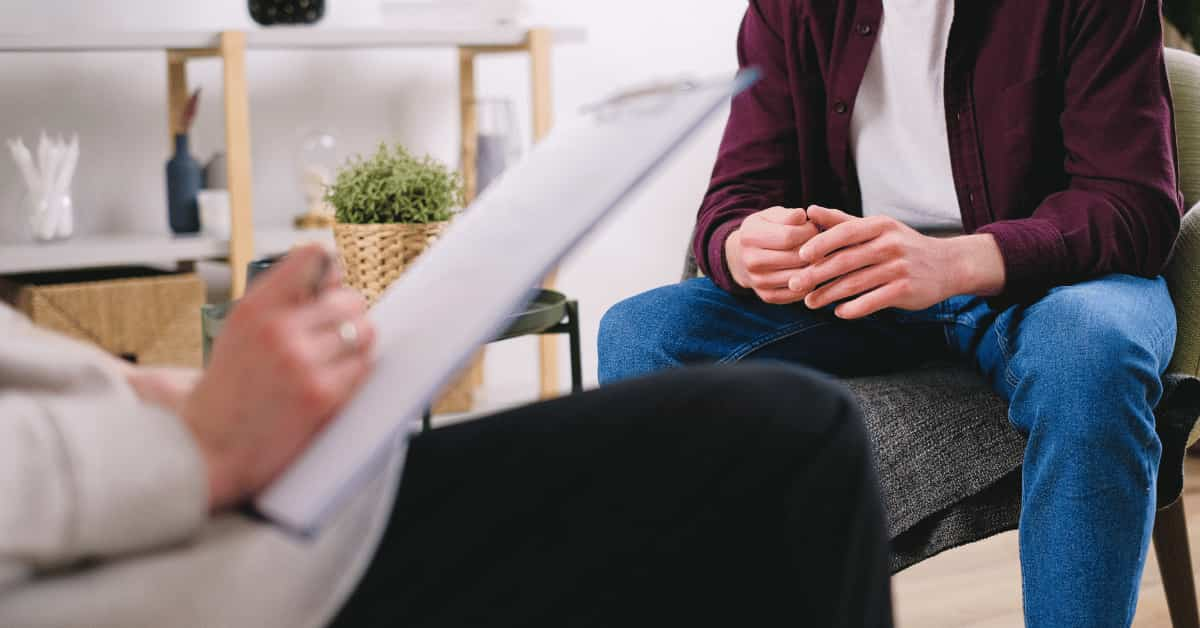
If you suspect that you may have social anxiety disorder, we encourage you to continue reading this section on professional treatment and consider seeking help from a healthcare professional.
Also, do not miss out on our free 7-day email course.
It will help you gain insight into your triggers and symptoms, learn practical tools for both short-term and long-term anxiety relief, and get on the path to a happier, more confident you with expert guidance.
Medication
If you’re struggling with social anxiety, it’s important to know that you can talk to your doctor or psychiatrist about pharmacological treatment options.
The most commonly prescribed and effective types of medication for social anxiety are selective serotonin reuptake inhibitors (SSRIs) and serotonin-norepinephrine reuptake inhibitors (SNRIs).

However, it’s important to note that medication can have significant side effects. As such, medication should only be used under the close supervision of a qualified healthcare professional.
To learn more about medication for social anxiety, we encourage you to sign up for our community newsletter. We will make sure you learn everything you need to know about the pharmacological treatment options for social anxiety disorder once you sign up.
Most importantly, talk to your doctor about taking medication for your social anxiety, if you are considering this option.
Brief: Medication can be an effective treatment for social anxiety, but it should only be prescribed by a doctor or psychiatrist. They can determine which type of medication is best suited for the patient, as well as monitor potential side effects.
Psychotherapy
Psychotherapy is another effective treatment option for social anxiety disorder.
There are numerous types of therapy for social anxiety that have been proven effective. The most commonly used therapy is cognitive-behavioral therapy (CBT), which typically includes exposure therapy, and social skills training.
As we mention in the section about challenging negative thoughts, CBT helps individuals change negative thought patterns and behaviors that contribute to social anxiety.

You have already learned about exposure therapy in the section about seeking gradual exposure. It involves gradually exposing the person to situations that trigger their anxiety, with the goal of reducing the fear response over time.
Social skills training teaches individuals how to interact with others in a more effective and comfortable way. Among others, it encapsulates the techniques we presented in part IV of this article, the improving social skills section.
However, there are many other types of psychotherapy that have been shown to be effective in the treatment of social anxiety. This is important, as not everyone responds successfully to the standard treatment of CBT.
If you think that you could benefit from therapy, it is important to talk to your doctor or mental health professional about your options. They can help you choose the type of therapy that is best suited for your needs and help you find a qualified therapist.
If you are interested in getting a complete and comprehensive overview of effective therapeutic approaches for social anxiety, we recommend that you read our eBook Effective Psychotherapies for Social Anxiety.

It summarizes the therapeutic interventions that have been shown to be effective in reducing social anxiety symptoms and gives you an idea of what each of these treatments looks like.
Many of our readers find it a useful read to determine which type of therapy they feel most inclined to try.
You can click here to go to our store and take a look at it.
Also, many people with social anxiety like the idea of trying online therapy, as the threshold to treatment entry is often perceived as much lower.
If that’s you, we recommend you take a look our partners at betthelp. You have probably heard of them by now. They offer professional online treatment with licensed therapists.
If you access their website through the following link and decide to sign up, we may receive a commission for recommending them (without additional costs to you).
If you found the information you encountered on our website helpful, you support our cause by doing so. Thank you so much!
Brief: Psychotherapy offers effective treatments for social anxiety, with various types available. A mental health professional can determine the best fit. It’s important to seek help if social anxiety interferes with your life.
We hope you find this article useful. We have put a lot of time and passion into it and sincerely hope that you will benefit from some of these tips.
Social anxiety can be difficult to manage and we strongly encourage you to talk to your doctor or psychiatrist if you think you are affected.

Also, do not miss out on our free 7-day email course!
It will help you gain insight into your triggers and symptoms, learn practical tools for both short-term and long-term anxiety relief, and get on the path to a happier, more confident you with expert guidance.
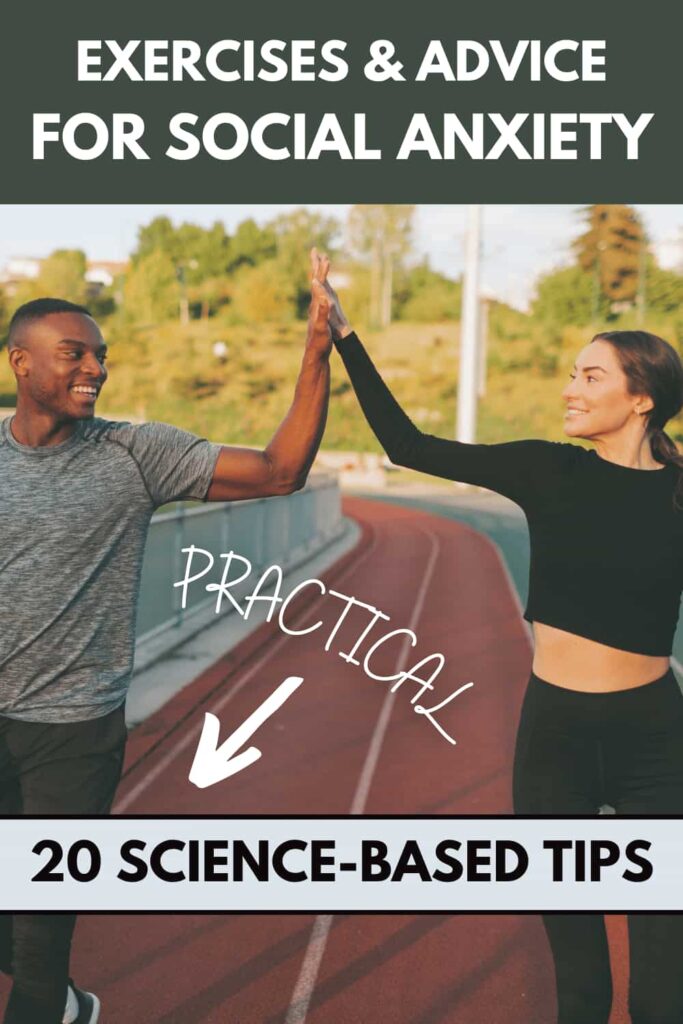
Pin | Share | Follow
[DISPLAY_ULTIMATE_SOCIAL_ICONS]
Alhola, P., & Polo-Kantola, P. (2007). Sleep deprivation: Impact on cognitive performance. Neuropsychiatric disease and treatment, 3(5), 553–567.
Aucoin, M., LaChance, L., Naidoo, U., Remy, D., Shekdar, T., Sayar, N., Cardozo, V., Rawana, T., Chan, I., & Cooley, K. (2021). Diet and Anxiety: A Scoping Review. Nutrients, 13(12), 4418. https://doi.org/10.3390/nu13124418
Carney, D. R., Cuddy, A. J., & Yap, A. J. (2010). Power posing: brief nonverbal displays affect neuroendocrine levels and risk tolerance. Psychological science, 21(10), 1363–1368. https://doi.org/10.1177/0956797610383437
Galletly, C., Moran, L., Noakes, M., Clifton, P., Tomlinson, L., & Norman, R. (2007). Psychological benefits of a high-protein, low-carbohydrate diet in obese women with polycystic ovary syndrome–a pilot study. Appetite, 49(3), 590–593. https://doi.org/10.1016/j.appet.2007.03.222
Kalmbach, D. A., Abelson, J. L., Arnedt, J. T., Zhao, Z., Schubert, J. R., & Sen, S. (2019). Insomnia symptoms and short sleep predict anxiety and worry in response to stress exposure: a prospective cohort study of medical interns. Sleep medicine, 55, 40–47. https://doi.org/10.1016/j.sleep.2018.12.001
Kandola, A., & Stubbs, B. (2020). Exercise and Anxiety. Advances in experimental medicine and biology, 1228, 345–352. https://doi.org/10.1007/978-981-15-1792-1_23
Norris, C. J., Creem, D., Hendler, R., & Kober, H. (2018). Brief Mindfulness Meditation Improves Attention in Novices: Evidence From ERPs and Moderation by Neuroticism. Frontiers in human neuroscience, 12, 315. https://doi.org/10.3389/fnhum.2018.00315
Parmentier, F. B. R., García-Toro, M., García-Campayo, J., Yañez, A. M., Andrés, P., & Gili, M. (2019). Mindfulness and Symptoms of Depression and Anxiety in the General Population: The Mediating Roles of Worry, Rumination, Reappraisal and Suppression. Frontiers in psychology, 10, 506. https://doi.org/10.3389/fpsyg.2019.00506
Schmidt, N. B., Richey, J. A., Buckner, J. D., & Timpano, K. R. (2009). Attention training for generalized social anxiety disorder. Journal of abnormal psychology, 118(1), 5–14. https://doi.org/10.1037/a0013643
Sharma, A., Madaan, V., & Petty, F. D. (2006). Exercise for mental health. Primary care companion to the Journal of clinical psychiatry, 8(2), 106. https://doi.org/10.4088/pcc.v08n0208a
Simpson, C. A., Diaz-Arteche, C., Eliby, D., Schwartz, O. S., Simmons, J. G., & Cowan, C. S. M. (2021). The gut microbiota in anxiety and depression – A systematic review. Clinical psychology review, 83, 101943. https://doi.org/10.1016/j.cpr.2020.101943
Weineck, F., Schultchen, D., Hauke, G., Messner, M., & Pollatos, O. (2020). Using bodily postures to reduce anxiety and improve interoception: A comparison between powerful and neutral poses. PloS one, 15(12), e0242578. https://doi.org/10.1371/journal.pone.0242578
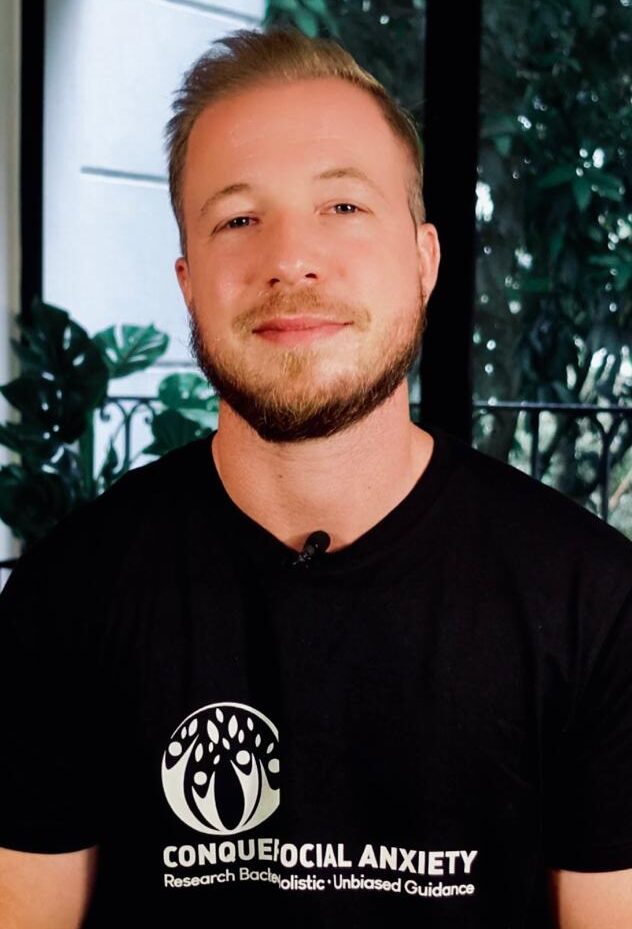
About the Author: Martin Stork
Martin is a professional psychologist with a background in physical therapy. He has organized and led various support groups for people with social anxiety in Washington, DC and Buenos Aires, Argentina. He is the founder of Conquer Social Anxiety Ltd, where he operates as a writer, therapist and director. You can click here to find out more about Martin.

